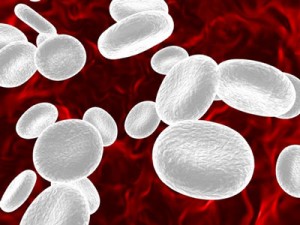Extended SGX301 Treatment Shows Positive Results in Early-Stage Cutaneous T-Cell Lymphoma
SGX301 has led positive results in early-stage CTCL, with over 70% achieving treatment success in the phase 3 FLASH study. The phase 3 FLASH (NCT02448381) study evaluating SGX301 (HyBryte) has shown promising results, with over 70% of patients with early-stage cutaneous T-cell lymphoma (CTCL) experiencing positive treatment responses.1
Extended Treatment Duration
The open-label, investigator-initiated study of SGX301 is currently evaluating its extended treatment for up to 12 months in patients with early-stage CTCL. To date, 9 patients have been enrolled, with 6 completing at least 18 weeks of therapy. Of these patients, 5 have achieved treatment success, which is defined as a 50% or greater improvement in the cumulative modified composite assessment of index lesion severity score.

Three patients responded within the first 12 weeks, and 2 reached a complete response by week 18. The remaining patients are early in their treatment cycle, with 1 showing substantial improvement. Further, SGX301 has been well tolerated, with no safety concerns observed.
Photodynamic Therapy Approach
SGX301 is a first-in-class treatment utilizing synthetic hypericin as the active ingredient. This photosensitizer is topically applied to skin lesions and activated by safe, visible light approximately 24 hours later. The red-yellow spectrum of light used in the treatment provides deeper skin penetration, enabling it to address even thicker lesions and plaques effectively.
FLASH Trial Results
The phase 3 FLASH trial enrolled 169 patients with early-stage CTCL. Investigators sought to evaluate SGX301 when given to patients over 3 treatment cycles.

In cycle 1, 116 patients received SGX301 treatment, with 16% achieving at least a 50% reduction in lesions compared with only 4% in the placebo group at 8 weeks (P =.04).1
In cycle 2, all patients received SGX301, and 40% of those treated for 12 weeks showed a significant response. Notably, SGX301 was also effective in both plaque (response 42%; P <.0001 relative to placebo treatment in cycle 1) and patch lesions (response 37%; P =.0009 relative to placebo treatment in cycle 1).

The third cycle of treatment was optional, with 66% of patients opting to continue. Those who did showed a 49% positive treatment response after completing all 3 cycles (P <.0001 vs patients receiving placebo in cycle 1). Notably, SGX301 demonstrated minimal systemic absorption and remained free from the mutagenic risks associated with other CTCL therapies.
Future Prospects
SGX301 has received orphan drug and fast track designations from the FDA, as well as orphan designation from the European Medicines Agency. A second phase 3 trial, FLASH2, will replicate the successful design of the initial FLASH trial but extend the treatment cycle to 18 weeks for a continuous evaluation of efficacy.

In conclusion, the extended treatment with SGX301 has shown promising results in the treatment of early-stage cutaneous T-cell lymphoma, offering a potential alternative with a favorable safety profile compared to current therapies.




















